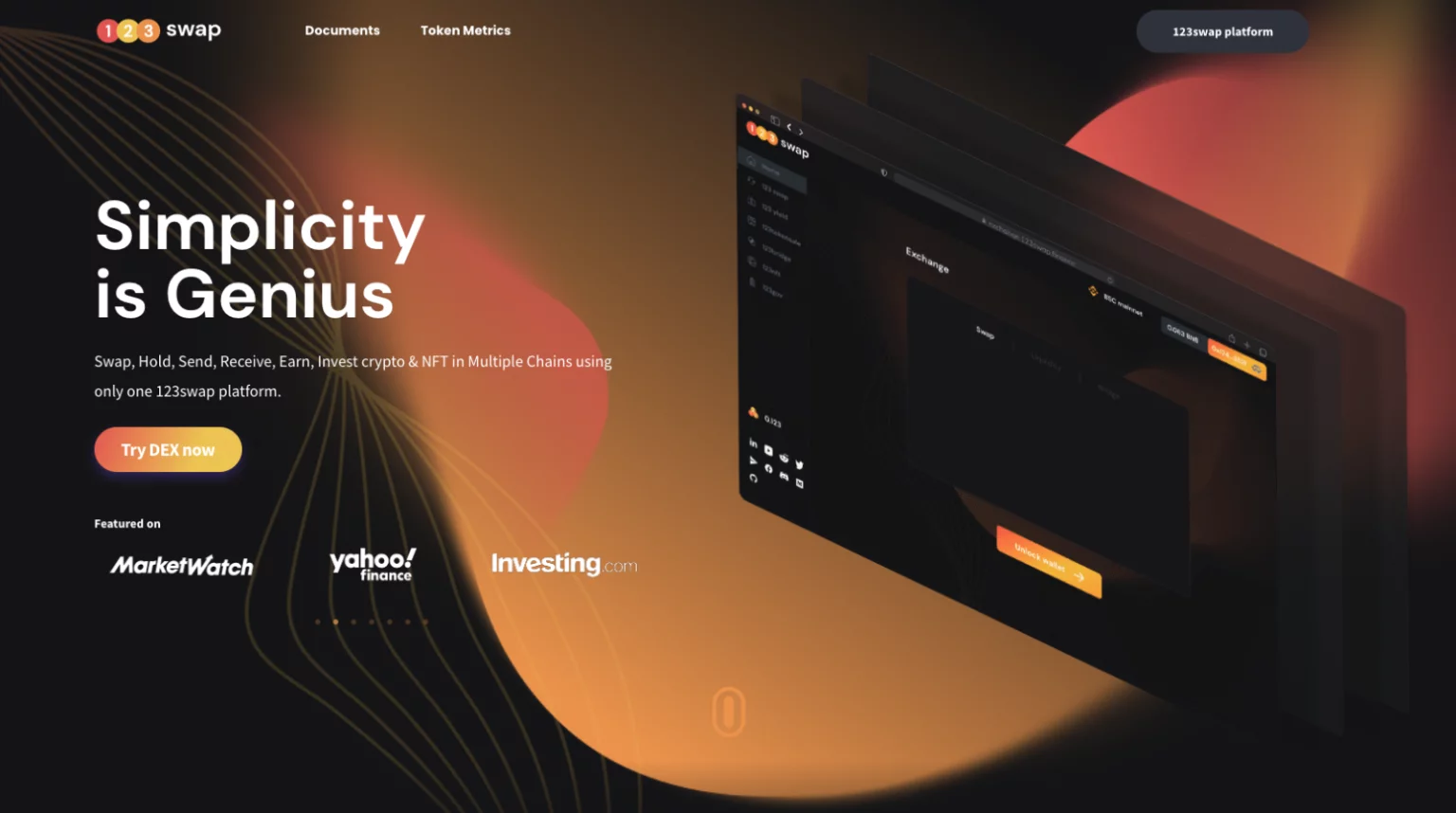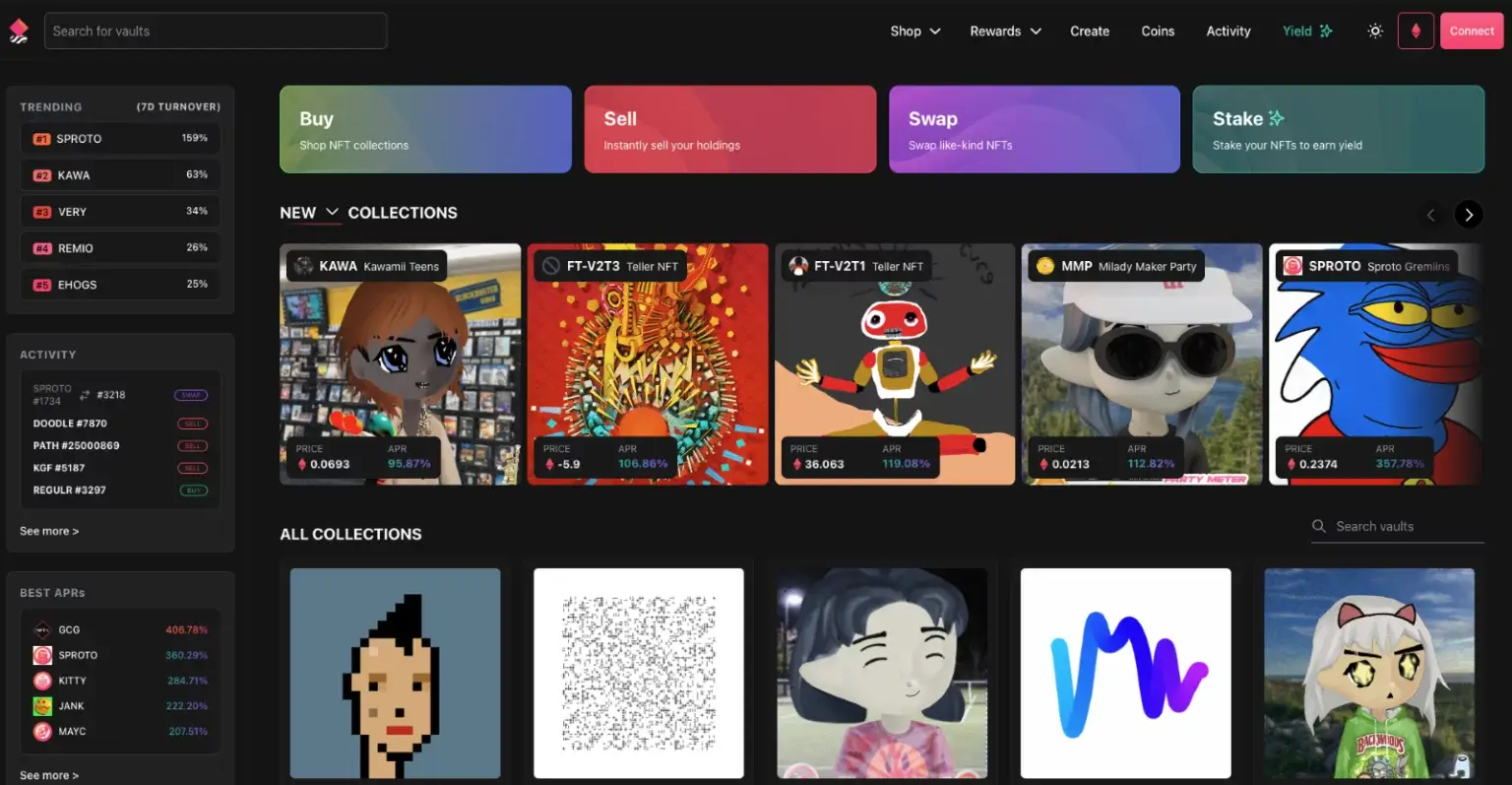NFT Staking: Invest in NFTs for Passive Income
In the cryptocurrency industry, staking has gained significant traction, providing investors with a straightforward way to earn passive income. But there’s a rising star in town: NFT staking.
However, not everyone fully grasps the ins and outs of this phenomenon and the mind-blowing potential it holds for earning passive income.
That’s where we come in, and in this article, we will delve deep into the captivating world of NFT staking, unraveling its secrets and unveiling the limitless opportunities it brings for generating passive income.
What is NFT Staking?
NFT staking is the process of securing and holding non-fungible tokens (NFTs) on a specific platform or protocol in order to earn staking rewards and additional benefits.
When you stake your NFTs, you’re essentially putting them to work on the blockchain. While NFTs are commonly associated with digital images like the CryptoPunks collection, they can represent various objects, ranging from digital art to video files to in-game items.
You attach your NFTs to a specific platform or protocol by staking them. In return for this action, you receive staking rewards. It’s a way to earn additional benefits while still maintaining ownership of your NFT.
To better understand NFT staking, you can draw a parallel with decentralized finance (DeFi) yield farming. In DeFi, cryptocurrencies are lent or provided as liquidity to earn rewards through interest or transaction fees. This concept of earning interest is similar to what you would experience with a bank, but no middleman has been involved in DeFi and NFT staking.
How Does NFT Staking Work?
NFTs, as previously said, are tokenized assets. NFTs could be moved to a platform that takes care of their safekeeping and governance, just like any tokenized asset. You can stake tokens in a value-creating crypto project, but why not stake tokens in an asset with the potential to generate income?
You might wonder why a platform would want to do that. Although the possibility of fee generation is frequently regarded as a positive motivation, it is also possible that an NFT might add distinctive value to a platform.
Once the NFT or tokenized asset has been moved to the staking platform, the asset’s governance can be assigned to determine the tokenomics. The tokens might be staked, and the delegators could obtain block and fee rewards once an annualized yield (APR) is created.
Various considerations, including the asset’s ability to produce an income stream such as royalties, would affect the level of staking rewards. Perhaps thinking about the concept of ‘tokenized patents,’ which can generate an income stream and possibly even form part of the staking incentive, can help you visualize this. Crypto investors looking for the most acceptable staking crypto payouts can earn up to 100% APR. (sometimes much more).
NFT Staking Rewards
NFT holders can receive staking rewards based on the platform and the type of NFT they deploy. Platforms typically offer periodic rewards, often paid daily or weekly, usually in their utility token. However, some platforms may have different reward tokens. You can trade these reward tokens and convert them into other cryptocurrencies or fiat money.
Specific staking platforms have decentralized autonomous organizations (DAOs) where NFT holders can lock their assets in a pool. This allows them to participate in platform governance, including voting on proposals. Some DAOs also enable users to create their own proposals, although this varies.
Many NFTs are from blockchain games, providing staking opportunities in play-to-earn games like Axie Infinity or The Sandbox. In these games, you can earn both crypto and NFTs, allowing you to stake the earned NFTs for additional benefits.
By exploring these staking opportunities, you can earn NFTs for free and potentially stake them for further rewards.
Pros and Cons of NFT Staking
NFT staking comes with lots of pros but also cons. Check out these pros and cons of staking your NFTs. It’s essential to weigh these factors before making a decision:
Pros of NFT Staking
Active Involvement in Projects
NFT staking allows you to engage with a variety of projects actively. Each project offers its own unique incentives for staking your non-fungible tokens (NFTs). You can earn utility tokens specific to the project by participating in staking. These utility tokens may come with additional perks like voting rights, giving you a say in important decisions and shaping the project’s future direction.
Utilizing Idle Digital Assets
If you’ve been holding onto an NFT with no immediate plans to sell, staking provides an ideal opportunity to put your idle digital assets to work. Locking your NFT on a staking platform can unlock its potential and generate profits without relinquishing ownership. This means you can earn passive income and enjoy the benefits associated with staking, such as receiving rewards and additional opportunities within the project.
Maximizing the Value of Your NFTs
Staking your NFTs allows you to extract additional value from your digital assets. Instead of simply holding onto them, you can actively participate in staking and benefit from the project’s growth and success. By staking, you can earn rewards and increase the overall value of your NFT holdings.
Cons of NFT Staking
Potential for Scams
While the allure of earning rewards on your NFTs is enticing, it’s essential to be aware of the potential risks involved. As the NFT industry is still evolving, distinguishing trustworthy platforms from bad actors can be challenging. Unfortunately, there have been instances of staking platforms misappropriating user funds and running away with their tokens. To safeguard yourself, conducting thorough research and due diligence on the staking platform and its team is crucial. Taking precautions and being cautious can help protect your assets in this rapidly developing space.
Price Volatility
When staking your NFT, it’s important to consider the volatility of the market and the digital art scene. While your NFT is locked in, its value can experience significant fluctuations due to various factors. Depending on the terms of your chosen staking platform, you may have limited or no ability to withdraw an NFT during a long lock-up period. However, temporary market fluctuations should be less concerning if you have a long-term investment strategy. Assessing your risk tolerance and aligning your staking decisions with your investment goals is essential.
Liquidity Constraints
When you stake your NFT, it becomes locked in the staking platform for a specific period. This lock-up period can vary depending on the platform and the terms of the staking agreement. During this time, you may not have immediate access to your NFT or the ability to sell it on the open market. If you anticipate the need for liquidity or the potential for selling your NFT shortly, staking might not be your best option. It’s essential to consider your financial needs and goals carefully before staking your NFT.
Before deciding whether it aligns with your investment strategy and personal circumstances, consider the benefits and drawbacks of NFT staking, including potential liquidity constraints.
Some of the Most Popular NFT Staking Platforms
If you find NFT staking suits you, we’ve got you covered with a list of the hottest platforms supporting staking for NFTs. These platforms are all about giving you unique features for NFTs. Check them out and find the perfect fit for your staking needs.
Remember, each platform brings its own flavor to the game, so explore and find the one that vibes with you the most.
1. 123swap

123swap is the ultimate platform for minimizing slippage and hooking you up with transparent, convenient exchanges, earnings, and investment management solutions.
They’ve got a range of DeFi solutions, but today we’re diving into the one that’s got everyone buzzing: NFT staking. Because 123swap, it’s all about staking your NFTs and raking in that sweet passive income.
Launching to reshape the game, they’re bringing the future to our doorstep, making cryptocurrency exchange easy and seamless. And get this—their cross-chain value exchange mechanism lets you trade directly with other users across any chain.
If you’re looking for a platform where you can do NFT stalking, 123swap may be a viable solution.
2. Binance NFT PowerStation

Besides 123swap, Binance NFT PowerStation is another top-rated and widely accessible platform you don’t want to miss. Standing out from the rest, Binance is a centralized crypto exchange that caters to a massive global user base. Here, users can earn passive income by holding Binance Fan Tokens.
Binance Fan Tokens are utility tokens that are associated explicitly with sports teams. By holding these tokens, users can enjoy a range of awesome benefits, including early access to ticket sales and the power to influence important decisions within the sports club. These tokens have gained significant popularity among sports enthusiasts and are also embraced by artists and celebrities with a substantial fan following.
So, if you’re looking to dive into the thrilling world of NFTs and enjoy the perks of being a part of your favorite sports team, Binance NFT PowerStation is the place to be.
3. NFTX

NFTX is also an excellent platform tailored for users seeking a comprehensive range of functionalities, including buying, selling, staking, and swapping NFTs.
The process begins by depositing NFTs into an NFTX vault and generating an ERC-20 token known as vTokens, which maintains a 1:1 ratio with the deposited NFT. These vTokens possess composability and fungibility, opening up various opportunities.
Holders of vTokens can stake them to earn enticing yield rewards or utilize them to acquire specific NFTs stored within a vault. To enhance liquidity and facilitate trading, vTokens can be pooled in automated market makers (AMMs), creating a vibrant marketplace for fellow traders.
As a liquidity provider (LP), users can earn trading fees in this setup.
It’s essential to remember that when staking an NFT on NFTX, the holder relinquishes ownership of the specific NFT that has been staked. Therefore, NFT staking on NFTX is more suitable for NFTs that are less rare and have common characteristics.
FAQ
What is the Risk of Staking an NFT?
Staking NFTs involves risks such as scams, price volatility, and liquidity constraints. The NFT market is still evolving, making it challenging to identify trustworthy platforms from fraudulent ones. As an investor, conducting extensive research and due diligence is crucial before staking your NFTs. Besides, the price of NFTs can be highly volatile, posing another risk in the staking process. Stay informed and cautious when considering NFT staking to mitigate these risks.
Does Staking an NFT Cost Gas?
When staking an NFT, you’ll usually encounter gas fees due to blockchain interactions. These fees are paid to the network for processing and validating transactions. The amount of gas needed depends on transaction complexity and network congestion. Gas fees can vary and might be higher during heavy network usage. Keep in mind the potential cost of gas fees when considering NFT staking.
Is NFT Staking Worth It for Passive Income?
Conducting thorough market research becomes essential when considering passive income opportunities with NFTs. It’s crucial to assess the NFT’s utility, potential rewards, and overall market conditions to make informed decisions. Remember that an NFT’s value can fluctuate based on its popularity, which can either lead to profitable returns or result in a less lucrative investment with potentially worthless digital assets.
If you are interested in gaming and wish to invest in the sector, exploring NFT staking on gaming platforms like Axie Infinity may be appealing. These blockchain games offer a unique opportunity to engage in gameplay and earn passive income. However, it’s important to remember that, similar to cryptocurrencies, NFTs can experience significant value fluctuations. Like any digital asset, there are inherent investment risks involved.
So, staking NFTs for passive income can be worthwhile, provided you conduct thorough market research, assess the NFT’s utility, and carefully evaluate the potential rewards and risks associated with the investment.



